-
 Bitcoin
Bitcoin $106,754.6083
1.33% -
 Ethereum
Ethereum $2,625.8249
3.80% -
 Tether USDt
Tether USDt $1.0001
-0.03% -
 XRP
XRP $2.1891
1.67% -
 BNB
BNB $654.5220
0.66% -
 Solana
Solana $156.9428
7.28% -
 USDC
USDC $0.9998
0.00% -
 Dogecoin
Dogecoin $0.1780
1.14% -
 TRON
TRON $0.2706
-0.16% -
 Cardano
Cardano $0.6470
2.77% -
 Hyperliquid
Hyperliquid $44.6467
10.24% -
 Sui
Sui $3.1128
3.86% -
 Bitcoin Cash
Bitcoin Cash $455.7646
3.00% -
 Chainlink
Chainlink $13.6858
4.08% -
 UNUS SED LEO
UNUS SED LEO $9.2682
0.21% -
 Avalanche
Avalanche $19.7433
3.79% -
 Stellar
Stellar $0.2616
1.64% -
 Toncoin
Toncoin $3.0222
2.19% -
 Shiba Inu
Shiba Inu $0.0...01220
1.49% -
 Hedera
Hedera $0.1580
2.75% -
 Litecoin
Litecoin $87.4964
2.29% -
 Polkadot
Polkadot $3.8958
3.05% -
 Ethena USDe
Ethena USDe $1.0000
-0.04% -
 Monero
Monero $317.2263
0.26% -
 Bitget Token
Bitget Token $4.5985
1.68% -
 Dai
Dai $0.9999
0.00% -
 Pepe
Pepe $0.0...01140
2.44% -
 Uniswap
Uniswap $7.6065
5.29% -
 Pi
Pi $0.6042
-2.00% -
 Aave
Aave $289.6343
6.02%
How big is the risk of three consecutive top divergences of RSI?
RSI triple top divergence signals weakening momentum, often hinting at a potential bearish reversal in crypto markets.
Jun 17, 2025 at 04:22 am

Understanding RSI and Its Role in Technical Analysis
The Relative Strength Index (RSI) is a momentum oscillator widely used in cryptocurrency trading to assess whether an asset is overbought or oversold. It typically operates on a scale from 0 to 100, with readings above 70 suggesting overbought conditions and below 30 indicating oversold levels. In the volatile world of crypto, traders often rely on RSI to identify potential reversals through divergence patterns.
A divergence occurs when the price of an asset moves in the opposite direction of a technical indicator like RSI. Specifically, a top divergence forms when the price makes higher highs while RSI makes lower highs, signaling weakening momentum and a possible reversal to the downside.
What Is a Consecutive Top Divergence?
When three consecutive top divergences occur on the RSI chart, it implies that the price has made three successive peaks, each higher than the last, while RSI has formed three corresponding peaks that are progressively lower. This pattern suggests a consistent decline in buying pressure despite rising prices, which can be a strong bearish signal.
In the context of cryptocurrencies, where market sentiment can shift rapidly due to macroeconomic news, regulatory changes, or whale movements, such a pattern might indicate that institutional selling is occurring behind the scenes even as retail investors continue pushing the price upward.
Analyzing the Risk Behind Three Consecutive Top Divergences
The risk associated with this pattern largely depends on several factors:
- Timeframe: On shorter timeframes like 1-hour or 4-hour charts, consecutive top divergences may reflect temporary exhaustion rather than a major trend reversal.
- Market Conditions: In highly bullish markets, assets can remain overbought for extended periods, making RSI signals less reliable unless confirmed by other tools.
- Volume Confirmation: A drop in volume during the third divergence increases the likelihood of a reversal.
- Correlation with Other Indicators: Using moving averages or MACD alongside RSI can help filter false signals.
In crypto markets, especially altcoins with low liquidity, a triple top divergence can lead to sharp corrections if large holders start dumping their positions, even if the broader market remains positive.
How to Identify and Confirm a Triple Top Divergence in RSI
To accurately spot and validate a triple top divergence, follow these steps:
- Plot RSI on Your Chart: Most trading platforms allow you to add RSI with default settings of 14 periods.
- Identify Price Peaks: Look for three distinct price highs forming consecutively.
- Compare with RSI Peaks: Ensure that RSI creates three descending peaks corresponding to the price highs.
- Draw Trendlines: Draw a trendline connecting the RSI peaks to confirm the descending momentum.
- Check Volume: Observe if volume declines during the formation of the third peak, reinforcing the bearish bias.
- Use Candlestick Patterns: Bearish candlesticks near the third peak can offer additional confirmation.
This process should be done on multiple timeframes to ensure consistency in the signal. For example, a triple divergence on both the daily and 4-hour charts increases the probability of a significant reversal.
Managing Risk When Facing Triple Top Divergence
If a triple top divergence appears on your chart, consider implementing the following risk management techniques:
- Reduce Exposure: If you're holding long positions, consider taking partial profits or tightening stop-loss orders.
- Avoid New Long Entries: Refrain from entering new long trades until the price breaks above the most recent swing high or RSI shows renewed strength.
- Set Stop-Loss Levels: Place stop-loss orders just above the third price peak to protect against sudden spikes.
- Wait for Confirmation Candles: Wait for a strong bearish candle closing below key support levels before confirming the reversal.
- Monitor Market News: Sometimes, unexpected events can override technical patterns, so staying informed about market developments is crucial.
By integrating these strategies, traders can mitigate losses and avoid being caught off guard by sudden market shifts triggered by the divergence.
Common Misinterpretations of RSI Divergence
Many traders misinterpret RSI divergence as an immediate sell signal. However, divergence only indicates weakening momentum, not an automatic reversal. In trending markets, especially in cryptocurrencies, price can continue moving in one direction despite repeated divergences.
Another common mistake is relying solely on RSI without considering volume, order flow, or broader market structure. Some traders also fail to adjust RSI settings based on the asset's volatility, leading to misleading signals.
Lastly, assuming that all divergences carry equal weight can be dangerous. The significance of a triple top divergence increases when supported by other indicators or when it aligns with key resistance zones or Fibonacci retracement levels.
Frequently Asked Questions
Q: Can triple top divergence occur in downtrends?
Yes, although rare, triple top divergence can appear in downtrends when the price temporarily rallies but fails to gain momentum, indicated by RSI making lower highs.
Q: Should I always exit my position when I see three consecutive top divergences?
Not necessarily. While it's a strong warning sign, exiting entirely depends on your strategy, risk tolerance, and whether other indicators confirm the reversal.
Q: How often does triple top divergence result in a major reversal in crypto markets?
It varies by asset and timeframe. On major coins like Bitcoin and Ethereum, triple top divergences tend to be more reliable, especially on daily charts.
Q: Are there any tools or indicators that work well with RSI to confirm triple top divergences?
Yes, tools like MACD, volume profiles, moving averages, and order block analysis can provide additional confirmation when evaluating triple top divergence setups.
Disclaimer:info@kdj.com
The information provided is not trading advice. kdj.com does not assume any responsibility for any investments made based on the information provided in this article. Cryptocurrencies are highly volatile and it is highly recommended that you invest with caution after thorough research!
If you believe that the content used on this website infringes your copyright, please contact us immediately (info@kdj.com) and we will delete it promptly.
- 2025-W Uncirculated American Gold Eagle and Dr. Vera Rubin Quarter Mark New Products
- 2025-06-13 06:25:13
- Ruvi AI (RVU) Leverages Blockchain and Artificial Intelligence to Disrupt Marketing, Entertainment, and Finance
- 2025-06-13 07:05:12
- H100 Group AB Raises 101 Million SEK (Approximately $10.6 Million) to Bolster Bitcoin Reserves
- 2025-06-13 06:25:13
- Galaxy Digital CEO Mike Novogratz Says Bitcoin Will Replace Gold and Go to $1,000,000
- 2025-06-13 06:45:13
- Trust Wallet Token (TWT) Price Drops 5.7% as RWA Integration Plans Ignite Excitement
- 2025-06-13 06:45:13
- Ethereum (ETH) Is in the Second Phase of a Three-Stage Market Cycle
- 2025-06-13 07:25:13
Related knowledge
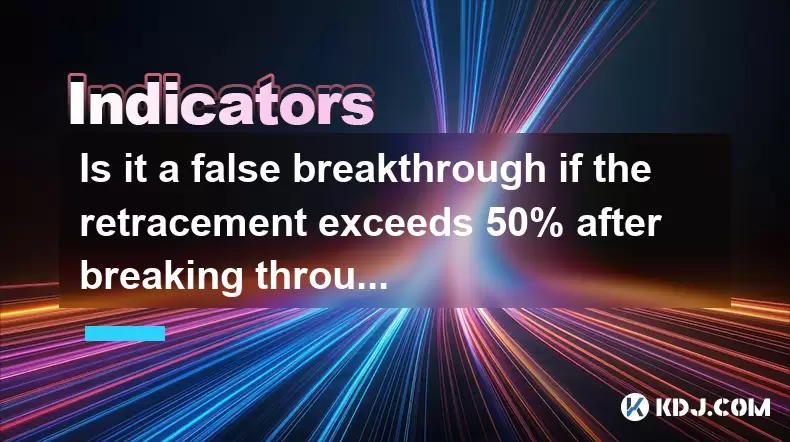
Is it a false breakthrough if the retracement exceeds 50% after breaking through the platform?
Jun 17,2025 at 08:01pm
Understanding Breakouts and Retracements in Cryptocurrency TradingIn cryptocurrency trading, breakouts refer to when the price of an asset moves beyond a defined support or resistance level with increased volume. These events often attract traders looking to capitalize on momentum. However, not all breakouts are valid. A false breakout, also known as a ...
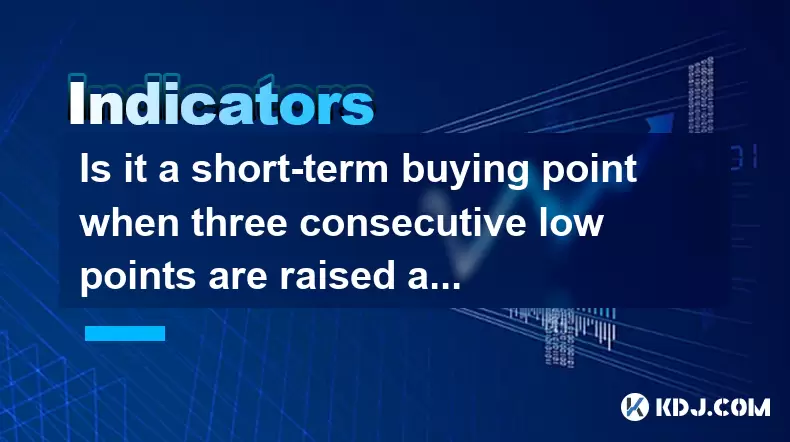
Is it a short-term buying point when three consecutive low points are raised at the 30-minute level?
Jun 17,2025 at 08:14pm
Understanding the Three Consecutive Low Points PatternIn technical analysis, identifying patterns in price movements is essential for making informed trading decisions. One such pattern that traders often observe is when three consecutive low points are raised within a specific timeframe — in this case, the 30-minute chart. This pattern suggests a poten...
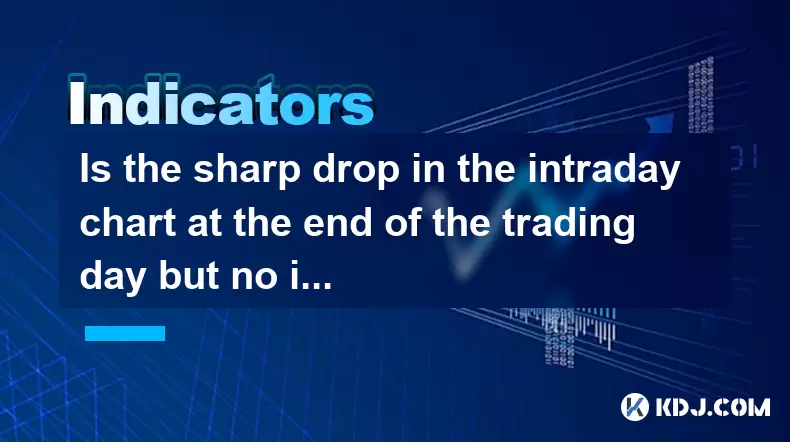
Is the sharp drop in the intraday chart at the end of the trading day but no increase in volume a trap to sell?
Jun 17,2025 at 08:35pm
Understanding the Intraday Chart DynamicsIn cryptocurrency trading, intraday charts are widely used by traders to analyze short-term price movements. These charts display price fluctuations within a single trading day and help traders make informed decisions based on real-time data. One common phenomenon observed is a sharp drop in price near the end of...
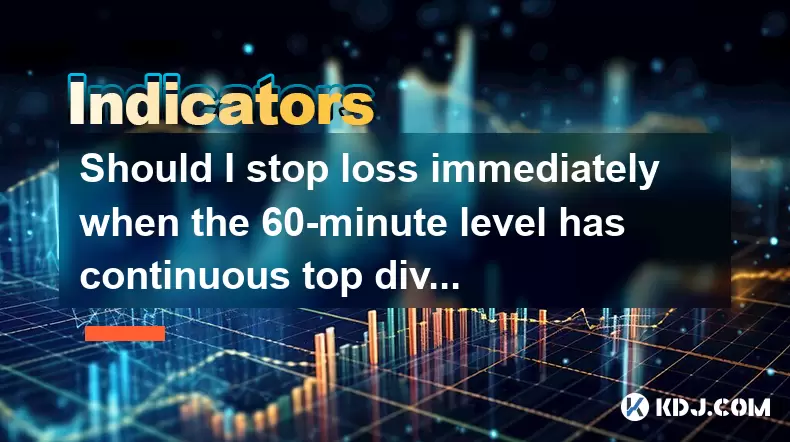
Should I stop loss immediately when the 60-minute level has continuous top divergence?
Jun 17,2025 at 05:28pm
Understanding Top Divergence in the 60-Minute ChartIn cryptocurrency trading, top divergence refers to a technical signal where the price of an asset makes higher highs while the indicator (often RSI or MACD) makes lower lows. This is commonly interpreted as a sign of weakening momentum and potential reversal. When this occurs on the 60-minute chart, it...
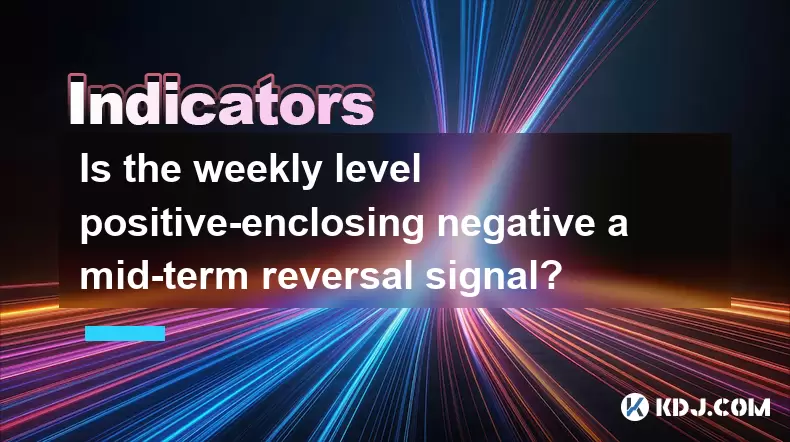
Is the weekly level positive-enclosing negative a mid-term reversal signal?
Jun 17,2025 at 07:42pm
Understanding Weekly Level Positive-Enclosing Negative Candlestick PatternsIn technical analysis, candlestick patterns are often used to predict potential price reversals. One such pattern is the weekly level positive-enclosing negative, which occurs when a weekly candle closes lower than the previous week's close but remains entirely within the range o...
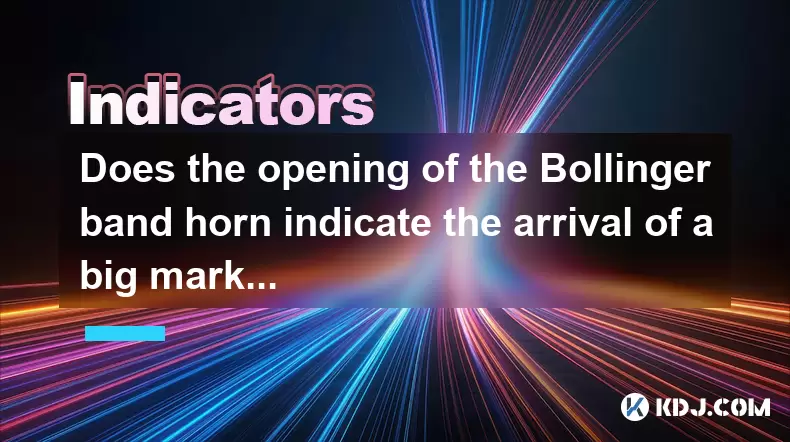
Does the opening of the Bollinger band horn indicate the arrival of a big market?
Jun 17,2025 at 06:28pm
Understanding the Bollinger Bands and Their StructureBollinger Bands are a widely used technical analysis tool in the cryptocurrency market, developed by John Bollinger. They consist of three lines: a simple moving average (SMA), typically set at 20 periods, and two standard deviation bands above and below this SMA. These bands dynamically expand and co...

Is it a false breakthrough if the retracement exceeds 50% after breaking through the platform?
Jun 17,2025 at 08:01pm
Understanding Breakouts and Retracements in Cryptocurrency TradingIn cryptocurrency trading, breakouts refer to when the price of an asset moves beyond a defined support or resistance level with increased volume. These events often attract traders looking to capitalize on momentum. However, not all breakouts are valid. A false breakout, also known as a ...

Is it a short-term buying point when three consecutive low points are raised at the 30-minute level?
Jun 17,2025 at 08:14pm
Understanding the Three Consecutive Low Points PatternIn technical analysis, identifying patterns in price movements is essential for making informed trading decisions. One such pattern that traders often observe is when three consecutive low points are raised within a specific timeframe — in this case, the 30-minute chart. This pattern suggests a poten...

Is the sharp drop in the intraday chart at the end of the trading day but no increase in volume a trap to sell?
Jun 17,2025 at 08:35pm
Understanding the Intraday Chart DynamicsIn cryptocurrency trading, intraday charts are widely used by traders to analyze short-term price movements. These charts display price fluctuations within a single trading day and help traders make informed decisions based on real-time data. One common phenomenon observed is a sharp drop in price near the end of...

Should I stop loss immediately when the 60-minute level has continuous top divergence?
Jun 17,2025 at 05:28pm
Understanding Top Divergence in the 60-Minute ChartIn cryptocurrency trading, top divergence refers to a technical signal where the price of an asset makes higher highs while the indicator (often RSI or MACD) makes lower lows. This is commonly interpreted as a sign of weakening momentum and potential reversal. When this occurs on the 60-minute chart, it...

Is the weekly level positive-enclosing negative a mid-term reversal signal?
Jun 17,2025 at 07:42pm
Understanding Weekly Level Positive-Enclosing Negative Candlestick PatternsIn technical analysis, candlestick patterns are often used to predict potential price reversals. One such pattern is the weekly level positive-enclosing negative, which occurs when a weekly candle closes lower than the previous week's close but remains entirely within the range o...

Does the opening of the Bollinger band horn indicate the arrival of a big market?
Jun 17,2025 at 06:28pm
Understanding the Bollinger Bands and Their StructureBollinger Bands are a widely used technical analysis tool in the cryptocurrency market, developed by John Bollinger. They consist of three lines: a simple moving average (SMA), typically set at 20 periods, and two standard deviation bands above and below this SMA. These bands dynamically expand and co...
See all articles

























































































